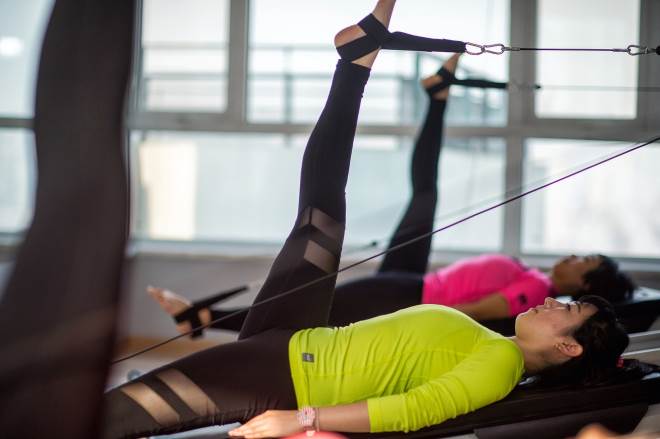Nutrient-focused meal strategies that complement active lifestyles
Practical meal strategies can support both appearance and performance. This article outlines nutrient-focused approaches that align with movement routines, recovery priorities, and everyday wellness habits to help sustain energy, skin health, and functional strength.

This article looks at how nutrient-focused meals can dovetail with active lifestyles to support performance, recovery, and visible wellness. Thoughtful combinations of protein, fats, carbohydrates, micronutrients, and fluids help sustain movement, protect skin health, and reduce fatigue across a training week. Practical timing, portion guidance, and simple meal templates make it easier to keep nutrition consistent alongside sleep, breathwork, and mobility work.
This article is for informational purposes only and should not be considered medical advice. Please consult a qualified healthcare professional for personalized guidance and treatment.
Nutrition for skincare and wellness
Food choices influence skin through inflammation, hydration, and micronutrient supply. Omega-3 fats, vitamin C, zinc, and antioxidants support circulation and skin repair, while excess refined sugars and highly processed oils may increase inflammation. Aim for whole-food sources: fatty fish or flax for omega-3s, citrus and berries for vitamin C, and a variety of colorful vegetables for antioxidants. Balanced meals that combine protein with vegetables and healthy fats can support both surface appearance and internal wellness without overly restrictive patterns.
How to fuel movement, endurance, and strength
Tailor meal composition to the type of activity: endurance sessions generally benefit from higher carbohydrate availability, while strength and toning workouts need adequate protein and some carbohydrates to fuel effort and aid muscle protein synthesis. Pre-workout meals around 1–3 hours before activity can include a moderate portion of carbs and protein (for example, oats with yogurt and fruit or a rice bowl with lean protein). Post-workout, prioritize 20–40 grams of protein with some carbohydrates to support recovery and glycogen restoration.
Meals that support mobility, flexibility, and toning
Mobility and flexibility work benefit from regular protein for connective tissue repair and anti-inflammatory nutrients to ease joint comfort. Include collagen-promoting foods or protein sources alongside vitamin C-rich fruits and vegetables for connective tissue synthesis. Light, frequent meals that combine lean proteins, whole grains, and vegetables create a steady supply of amino acids for toning and slow-strength adaptations. Hydrating soups and stews can also support circulation and joint comfort on days focused on stretching or pilates.
Hydration, sleep, breathwork, and recovery
Hydration is fundamental for circulation, thermoregulation, and exercise performance; water needs vary with sweat loss and activity intensity. Electrolyte-containing beverages or foods (bananas, tomatoes, broths) can help after heavy sweating. Sleep and breathwork drive hormonal balance and parasympathetic recovery—meals that avoid high sugar and heavy fat late at night may support sleep quality. Include magnesium-rich foods (leafy greens, nuts) in evening meals to assist relaxation and recovery processes.
Posture, circulation, and routine stretching nutrition
Good posture and consistent stretching are supported indirectly by nutrition that reduces systemic inflammation and supports muscle function. Iron and B vitamins assist oxygen transport and energy production, while nitrates in beets and leafy greens may help circulation. Establish a daily routine that includes protein at regular intervals to maintain muscle tone and prevent fatigue-related posture collapse. Light snacks timed around mobility sessions—like yogurt with fruit or hummus and vegetables—can keep energy steady for focused stretching or desk-based posture work.
Mindfulness, pilates, yoga, and practical meal plans
Mindful eating practices complement pilates and yoga by encouraging attention to hunger, fullness, and digestion. Meals that are easy to digest and balanced in macronutrients prevent sluggishness during classes: small balanced breakfasts or plant-forward lunches with lean protein, whole grains, and vegetables often perform well. Consider simple meal templates such as: 1) breakfast: whole grain, protein, fruit; 2) lunch: colorful salad or bowl with legumes/lean protein and healthy fat; 3) dinner: steamed vegetables, complex carbs, and a moderate protein. These templates leave room for adjustments based on endurance training days or recovery-focused sessions.
Conclusion
Nutrient-focused meal strategies for active lifestyles center on consistency, appropriate macronutrient balance for activity type, and attention to hydration and micronutrients that support skin, circulation, and repair. Combining mindful meal timing with sleep-supportive evening choices, regular protein distribution, and anti-inflammatory food selections helps sustain movement, mobility, and day-to-day recovery. Small, repeatable templates make it easier to align nutrition with pilates, yoga, strength work, and endurance sessions while supporting overall wellness.





